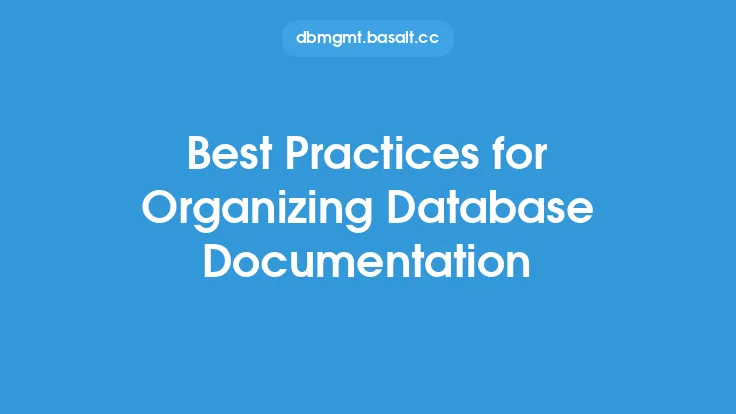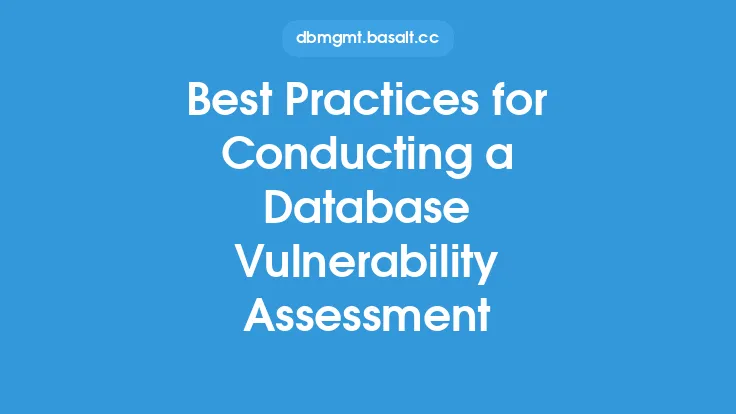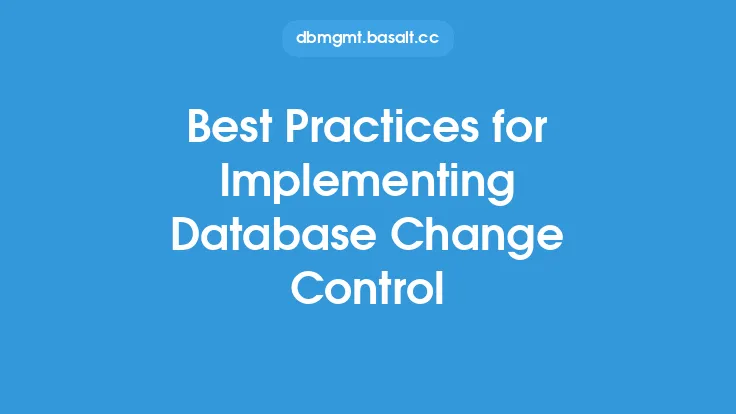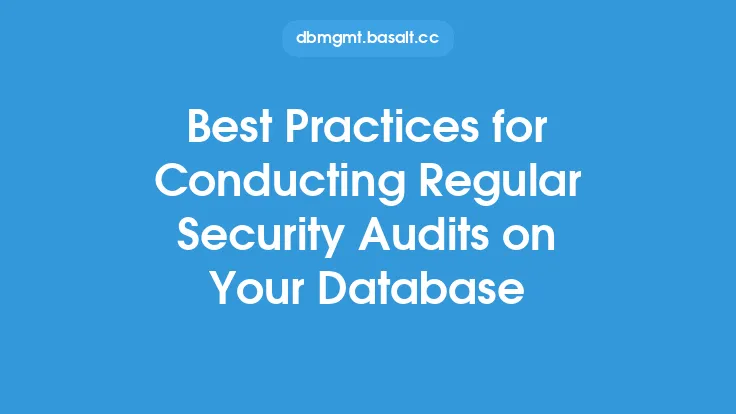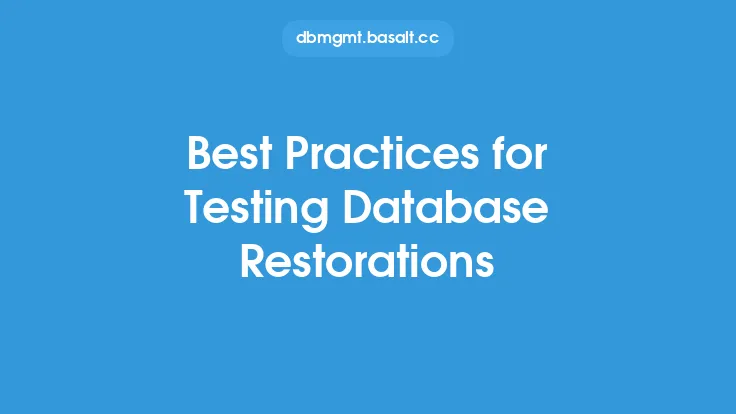When it comes to database configuration, documentation is a crucial aspect that is often overlooked. Proper documentation of database configuration is essential for ensuring the smooth operation, maintenance, and troubleshooting of databases. In this article, we will discuss the best practices for database configuration documentation, highlighting the importance of accurate, comprehensive, and up-to-date documentation.
Introduction to Database Configuration Documentation
Database configuration documentation refers to the process of creating and maintaining detailed records of database configuration settings, parameters, and other relevant information. This documentation serves as a single source of truth for database administrators, developers, and other stakeholders, providing them with the information they need to manage, maintain, and optimize database performance. Effective database configuration documentation helps to reduce errors, improve collaboration, and increase efficiency, ultimately leading to better database management and reduced downtime.
Benefits of Database Configuration Documentation
There are several benefits to maintaining accurate and comprehensive database configuration documentation. Some of the key advantages include:
- Improved collaboration: Database configuration documentation provides a shared understanding of database settings and parameters, facilitating collaboration among team members and reducing misunderstandings.
- Reduced errors: By documenting database configuration settings, administrators can avoid errors caused by incorrect or inconsistent settings, which can lead to downtime, data loss, or security breaches.
- Faster troubleshooting: With detailed documentation, administrators can quickly identify and resolve issues, reducing the time and effort required for troubleshooting.
- Simplified maintenance: Database configuration documentation makes it easier to perform routine maintenance tasks, such as backups, upgrades, and patches, by providing a clear understanding of database settings and dependencies.
- Enhanced security: Accurate documentation of database configuration settings helps to ensure that security measures are properly implemented and maintained, reducing the risk of security breaches.
Best Practices for Database Configuration Documentation
To create effective database configuration documentation, follow these best practices:
- Use a standardized format: Establish a consistent format for documenting database configuration settings, using templates or tools to ensure uniformity and ease of use.
- Include all relevant information: Document all database configuration settings, including parameters, settings, and dependencies, as well as any relevant notes or comments.
- Keep documentation up-to-date: Regularly review and update database configuration documentation to reflect changes, ensuring that it remains accurate and relevant.
- Use version control: Use version control systems to track changes to database configuration documentation, allowing administrators to revert to previous versions if needed.
- Make documentation accessible: Store database configuration documentation in a secure, accessible location, such as a shared repository or wiki, to ensure that authorized personnel can easily access and review the information.
Tools and Techniques for Database Configuration Documentation
Several tools and techniques can help with database configuration documentation, including:
- Documentation management tools: Tools like Confluence, SharePoint, or wiki platforms can help to create, manage, and share database configuration documentation.
- Database management systems: Many database management systems, such as Oracle, Microsoft SQL Server, or MySQL, provide built-in tools and features for documenting database configuration settings.
- Scripting and automation tools: Tools like Ansible, Puppet, or PowerShell can help to automate database configuration tasks and generate documentation.
- Version control systems: Version control systems like Git, Subversion, or Mercurial can help to track changes to database configuration documentation and manage different versions.
Database Configuration Documentation Templates
Using templates can help to simplify the process of creating database configuration documentation. Some common templates include:
- Database configuration settings template: This template should include fields for documenting database configuration settings, such as parameter names, values, and descriptions.
- Database schema template: This template should include fields for documenting database schema, including table structures, relationships, and indexes.
- Database security template: This template should include fields for documenting database security settings, including authentication methods, access controls, and encryption.
Challenges and Limitations of Database Configuration Documentation
While database configuration documentation is essential, there are several challenges and limitations to consider:
- Keeping documentation up-to-date: Database configuration settings can change frequently, making it challenging to keep documentation current and accurate.
- Ensuring consistency: Database configuration documentation may be created and maintained by different administrators, which can lead to inconsistencies and errors.
- Managing complexity: Large, complex databases can be difficult to document, requiring significant time and effort to create and maintain accurate documentation.
- Balancing detail and brevity: Database configuration documentation should be detailed enough to be useful but concise enough to be easily readable and maintainable.
Conclusion
Database configuration documentation is a critical aspect of database management, providing a single source of truth for database configuration settings, parameters, and other relevant information. By following best practices, using tools and techniques, and creating effective documentation templates, administrators can ensure that their database configuration documentation is accurate, comprehensive, and up-to-date. While there are challenges and limitations to consider, the benefits of database configuration documentation make it an essential investment for any organization that relies on databases to store and manage critical data.
